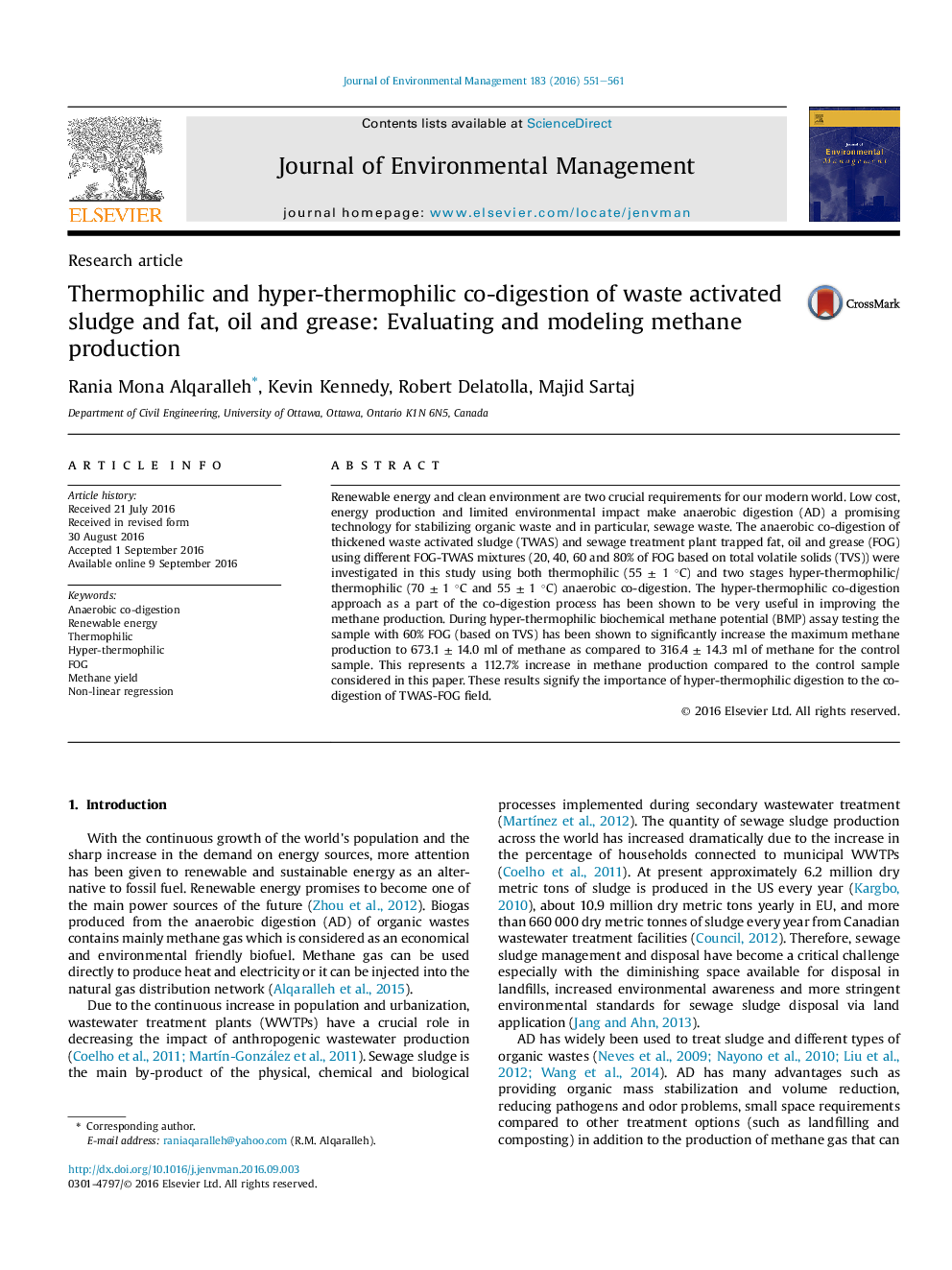| کد مقاله | کد نشریه | سال انتشار | مقاله انگلیسی | نسخه تمام متن |
|---|---|---|---|---|
| 5117190 | 1378118 | 2016 | 11 صفحه PDF | دانلود رایگان |
- Using FOG for TWAS anaerobic co-digestion proved to improve the degradation process and boost methane production.
- The maximum methane production occurred when 60% FOG was used in the co-digestion mixture.
- Hyper-thermophilic digestion significantly enhanced the co-digestion process, methane production and TVS reduction.
- 80% FOG in the co-digestion mixture limited the co-digestion process and inhibited the methane production.
- The RC model accurately predicted the methane production and the maximum methane production rate in the current study.
Renewable energy and clean environment are two crucial requirements for our modern world. Low cost, energy production and limited environmental impact make anaerobic digestion (AD) a promising technology for stabilizing organic waste and in particular, sewage waste. The anaerobic co-digestion of thickened waste activated sludge (TWAS) and sewage treatment plant trapped fat, oil and grease (FOG) using different FOG-TWAS mixtures (20, 40, 60 and 80% of FOG based on total volatile solids (TVS)) were investigated in this study using both thermophilic (55 ± 1 °C) and two stages hyper-thermophilic/thermophilic (70 ± 1 °C and 55 ± 1 °C) anaerobic co-digestion. The hyper-thermophilic co-digestion approach as a part of the co-digestion process has been shown to be very useful in improving the methane production. During hyper-thermophilic biochemical methane potential (BMP) assay testing the sample with 60% FOG (based on TVS) has been shown to significantly increase the maximum methane production to 673.1 ± 14.0 ml of methane as compared to 316.4 ± 14.3 ml of methane for the control sample. This represents a 112.7% increase in methane production compared to the control sample considered in this paper. These results signify the importance of hyper-thermophilic digestion to the co-digestion of TWAS-FOG field.
Journal: Journal of Environmental Management - Volume 183, Part 3, 1 December 2016, Pages 551-561
